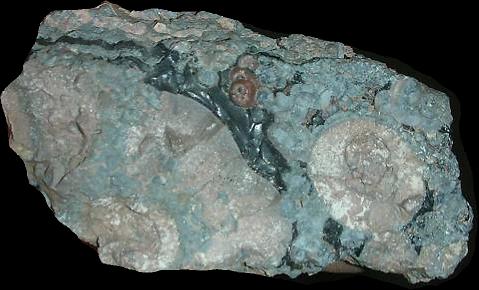Obsidian is a naturally occurring glass formed as an extrusive igneous rock. It is produced when felsic lava extruded from a volcano cools without crystal growth. Obsidian is commonly found within the margins of rhyolitic lava flows known as obsidian flows, where the chemical composition (high silica content) induces a high viscosity and polymerization degree of the lava. The inhibition of atomic diffusion through this highly viscous and polymerized lava explains the lack of crystal growth. Obsidian is mineral-like, but not a true mineral because as a glass it is not crystalline. Additionally its composition is too complex to comprise a single mineral. It is sometimes classified as a mineraloid. Though obsidian is dark in color similar to mafic rocks such as basalt, obsidian's composition is extremely felsic. Obsidian consists mainly of silica, usually 70% or more. Crystalline rocks with obsidian's composition include granite and rhyolite. Because obsidian is metastable at the earth's surface (over time the glass becomes fine-grained mineral crystals), no obsidian has been found that is older than Cretaceous age. This breakdown of obsidian is accelerated by the presence of water. Obsidian has a low water content when fresh, typically less than 1% water by weight, but becomes progressively hydrated when exposed to groundwater, forming perlite. Tektites were once thought by many to be obsidian produced by lunar volcanic eruptions, though few scientists now adhere to this hypothesis. Pure obsidian is usually dark in appearance, though the color varies depending on the presence of impurities. Iron and magnesium typically give the obsidian a dark green to brown to black color. A very few samples are nearly colorless. In some specimens, a blotchy or snowflake pattern (snowflake obsidian) is present.


